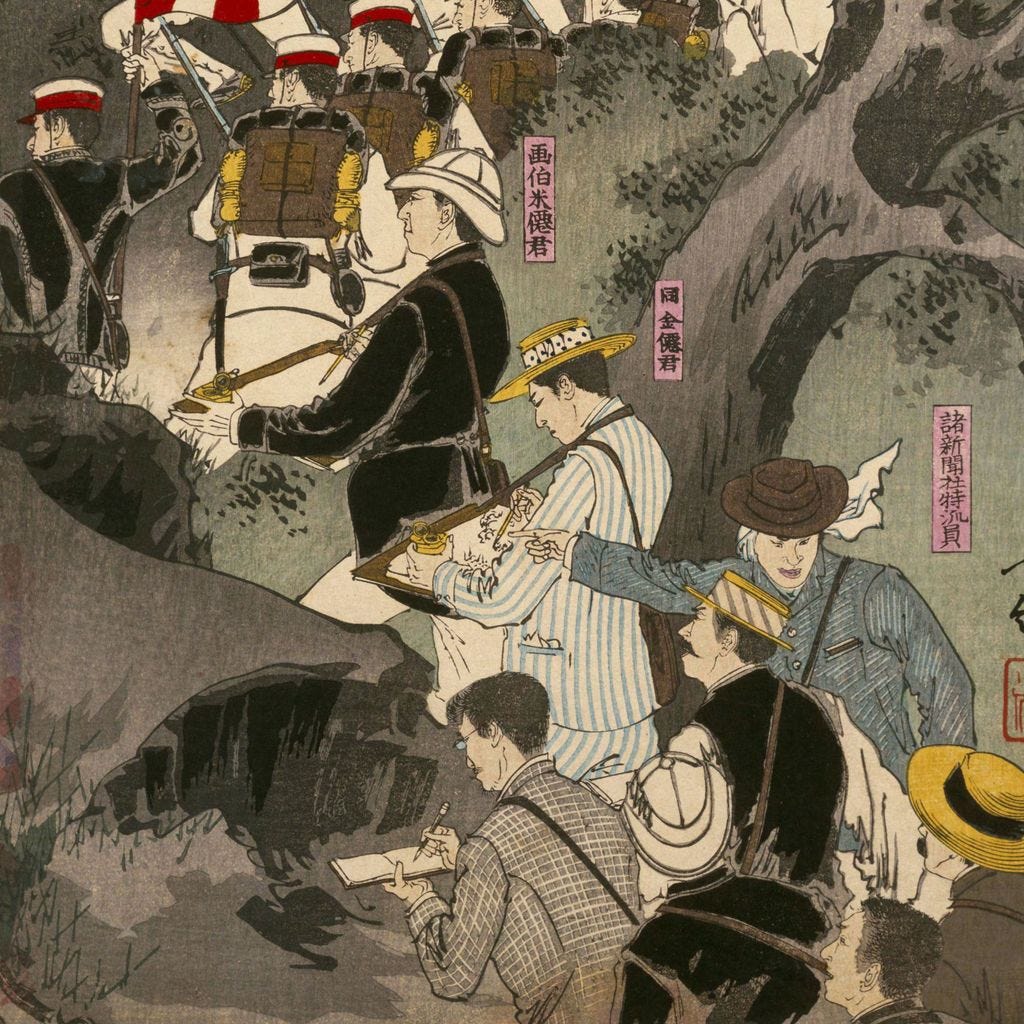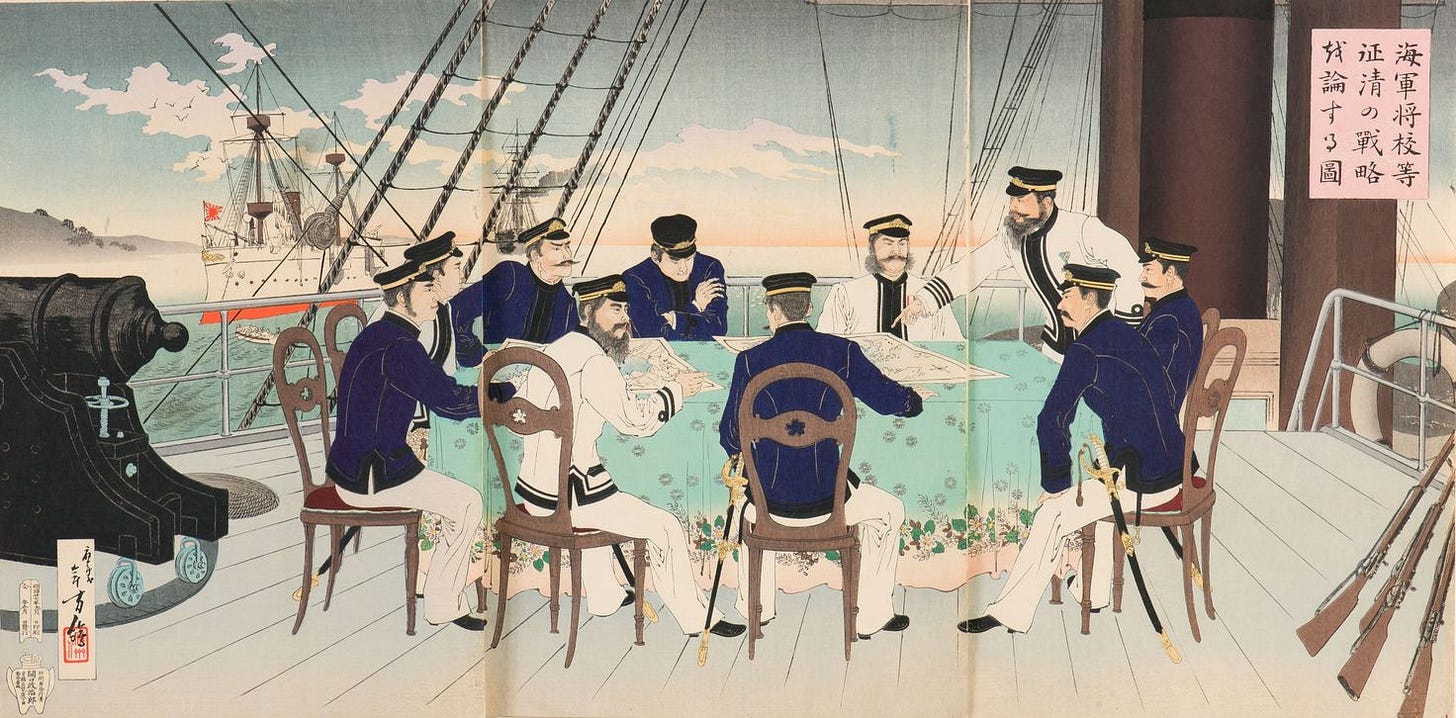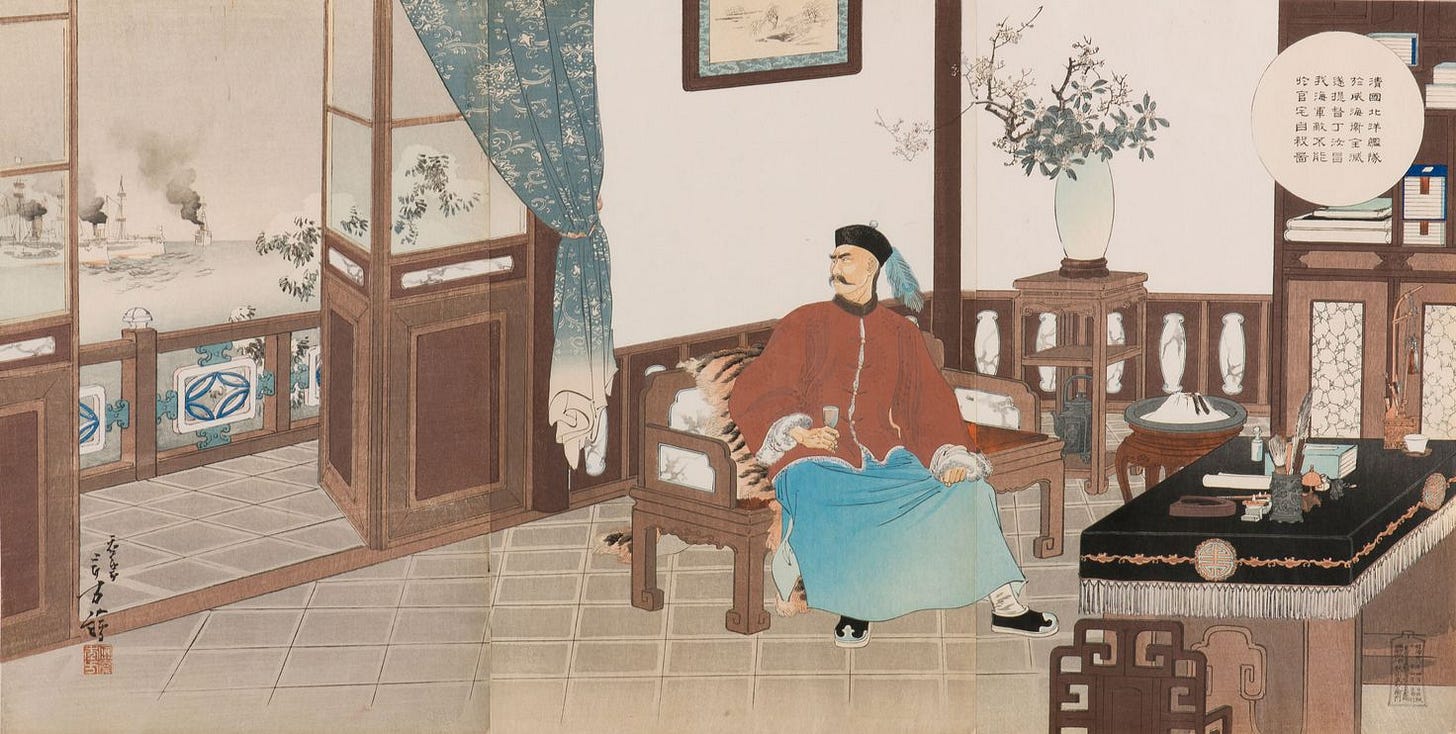Mizuno Toshikata – Part 3: Art from the front lines
The third part of an eight-part series on the life and work of Mizuno Toshikata, an ukiyo-e artist and nihon-ga painter active during the turbulent Meiji period.
Recap: In the first part we looked at Mizuno Toshikata’s childhood and his apprenticeship with Tsukioka Yoshitoshi, one of the best-regarded ukiyo-e artists of the day. When Toshikata turned 19, he published his first woodblock print bearing his own signature, “Mizuno Toshikata,” marking his debut as an artist. In the second part, we looked how Toshikata shifted to creating book and newspaper illustrations when ukiyo-e was declining in popularity.
If you are just joining us, you can start the journey here:
Art from the front lines
In 1884, the First Sino-Japanese War broke out, an intense conflict in which the Japanese Empire forcefully challenged China’s influence over Korea. Naturally, Japan’s newspapers turned the successes of its military campaigns into a propaganda-fueled media spectacle that captured the attention of the masses craving after news from the front lines.
The First Sino-Japanese War was a significant moment for news publishing in Japan, transforming the landscape of journalism and shaping public opinion. On the one hand, it led to advancements in reporting techniques, visual media, and printing — while at the same time highlighting the emerging nationalistic tendencies in journalism and a tension between freedom of the press and government censorship.
For the woodblock print industry, the war meant an unprecedented surge in demand for a new genre of prints, the sensō-e (literally, war-pictures), while marking at the same time the last, yet still-vibrant breath of a dying art form. While the genre was competing with faster and less expensive technologies, such as lithography and photography, publishers quickly recognized the demand for dramatic visuals that could illustrate the war’s developments and capitalize on the opportunity to make money.
Even though photography had emerged as a key journalistic medium, it was not yet widely available. The black-and-white reproduction in some ways lacked the fidelity and excitement offered by a dramatically composed multicolored woodblock print. War prints typically included scenes of battles fought by the Japanese army with modern battleships and weapons — as most of the audience quite literally had never glimpsed these technologies — or portraits of high-ranking officers and courageous soldiers.
Though most of the sensō-e were based on real events, reported in “real-time” from the frontlines, print designers frequently exaggerated the skirmishes they depicted, both to emphasize Japanese heroism and military might and entice buyers of woodblock prints. Patriotic citizens were eager to purchase these works, and the competition between publishers over customers was intense.


Although the First Sino-Japanese War lasted less than a year, it produced around 3,000 woodblock prints depicting scenes from the conflict — a staggering amount meaning that, on average, some 10 new prints were published daily.
Toshikata became one of the many woodblock-print artists recruited to produce sensō-e war pictures. With prior experience depicting historic war heroes, he was well suited to bring the war’s dramatic battle scenes to life.
Various publishers, such as the prominent Akiyama Buemon and Sekiguchi Masajirō, who specialized in catering to the sensō-e craze, sought out Toshikata’s services. He created several elaborate triptych prints, including “Naval Officers Discussing Strategy for the Conquest of Qing”and “Hurrah and Hurrah Again for the Great Empire of Japan,” which showed the battle of Pyongyang.

These commissions must have been a welcome source of income for Toshikata, who ended his stint at Yamato Shinbun just before the war began — providing financial stability at a time when traditional ukiyo-e was declining in popularity. But as the battlefield dust settled in 1895, the demand for woodblock prints dissipated as well. For Toshikata, it was time to turn the page and focus on other creative endeavors.

This was the third part of the eight-part newsletter series on the life and work of Mizuno Toshikata.
In the next newsletter, Part 4: The literary frontispiece, we will shift the theme and look at his kuchi-e illustrations for literary magazines. It is fascinating to see how Toshikata was able to adapt his style to the audience of his commissions. The delicate lines, soft colors and gentle female figures of his kuchi-e illustrations contrast sharply with the intensity of his early work and the bombast of his senso-e propaganda prints, showing the wide range of expression in his repertoire.
I hope you’ll join me again next time, to explore another side of Toshikata.
Thank you for reading The Arts of Japan’s Substack newsletter.
I hope you enjoyed it! If you did, please take a moment to hit the heart button at the top of the email or in the Substack app.
Feel free to leave a comment! I would love to hear your thoughts. If you have additional information on the subject or found an error, your constructive feedback is always welcome too.
And, of course, feel free to share the post or subscribe to The Arts of Japan if you haven’t yet done so:
Stefan Yanku adapted this Substack issue from an article he published on The Arts of Japan’s website. For further credits and references, please visit the original article at https://artsofjapan.com/en/profiles/mizuno-toshikata
For copyrights and usage permissions, please refer to the article linked above and the general statement on our website, available at https://artsofjapan.com/en/impressum.






